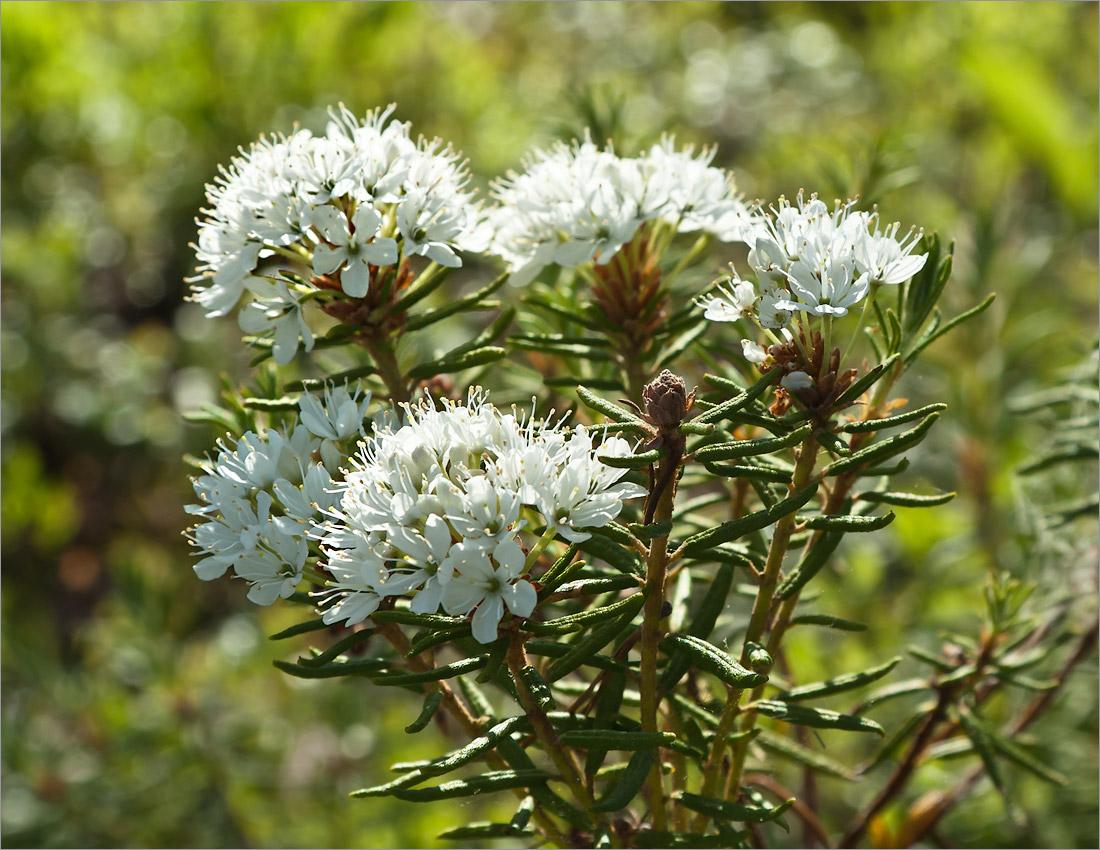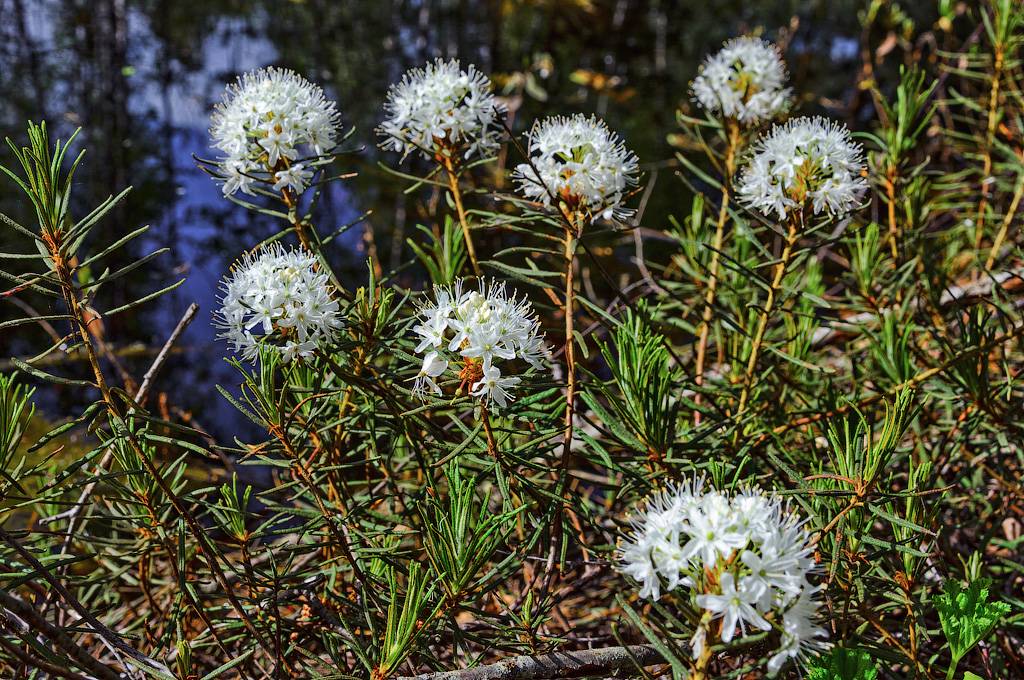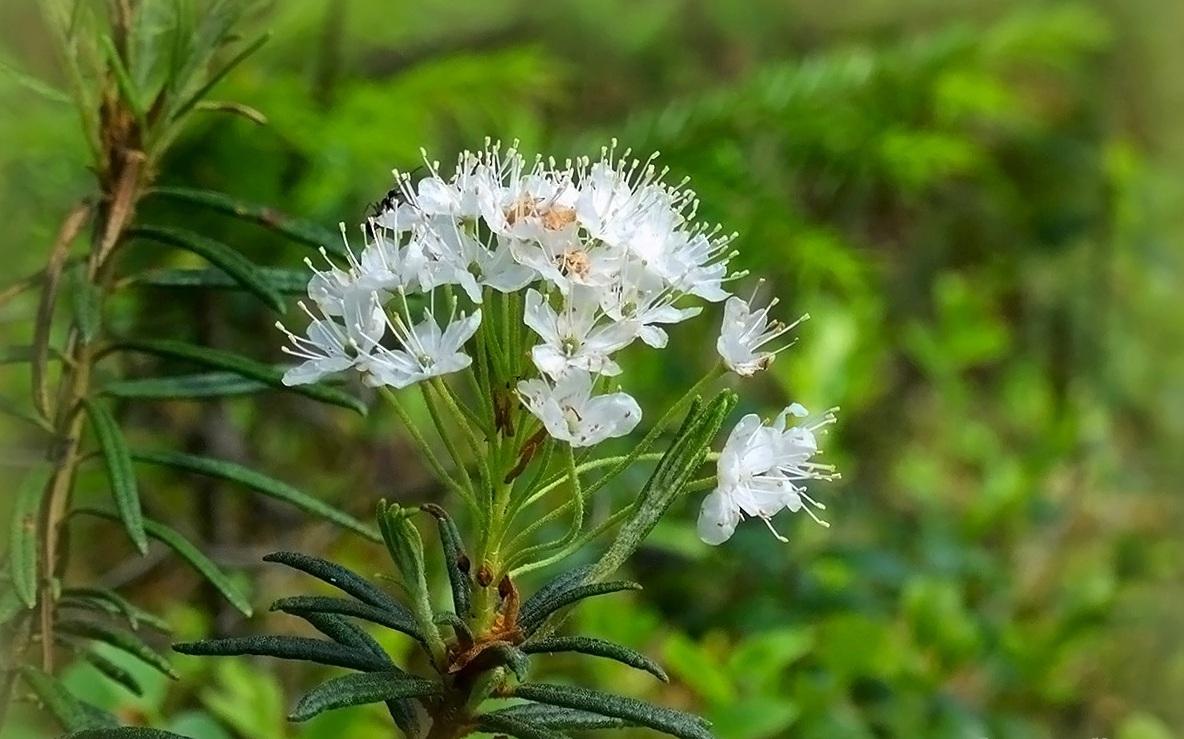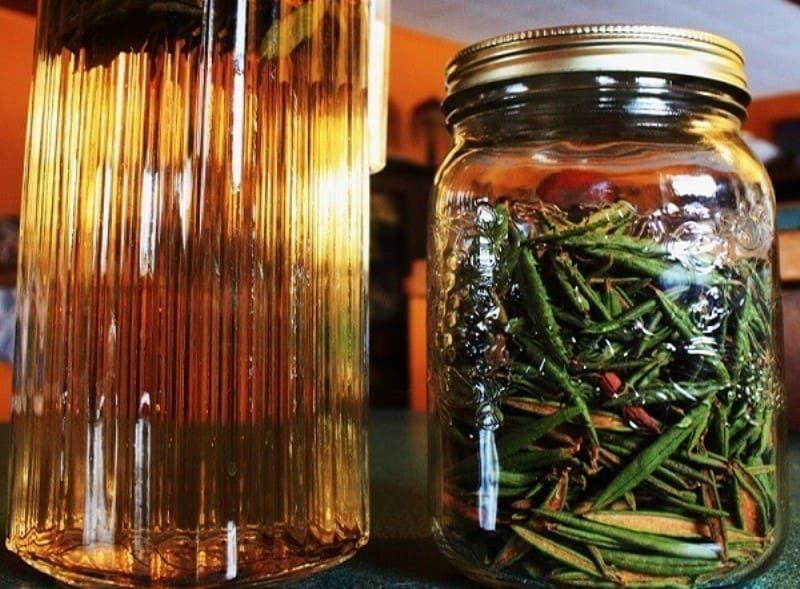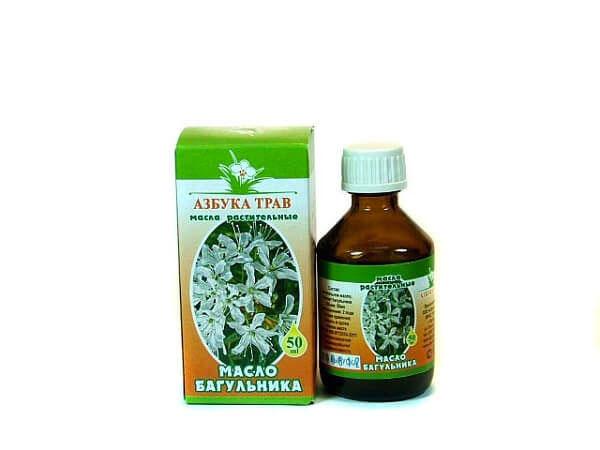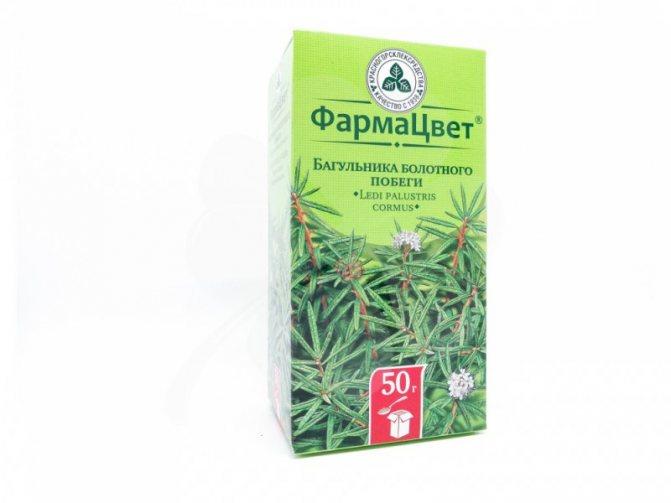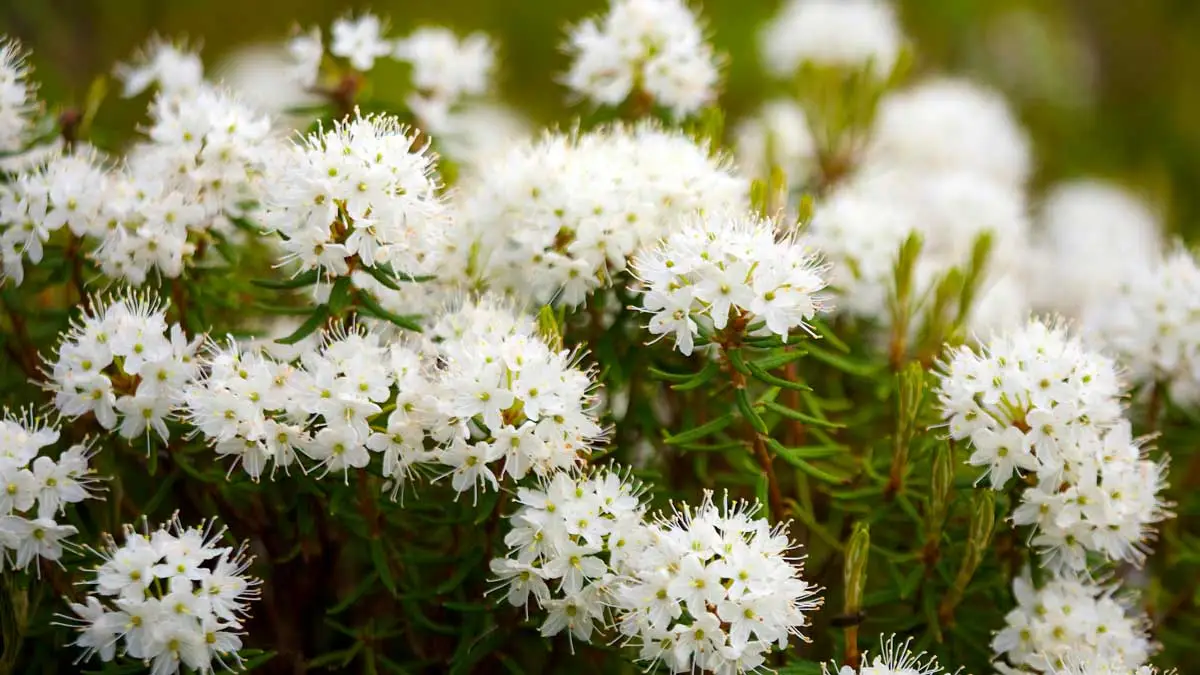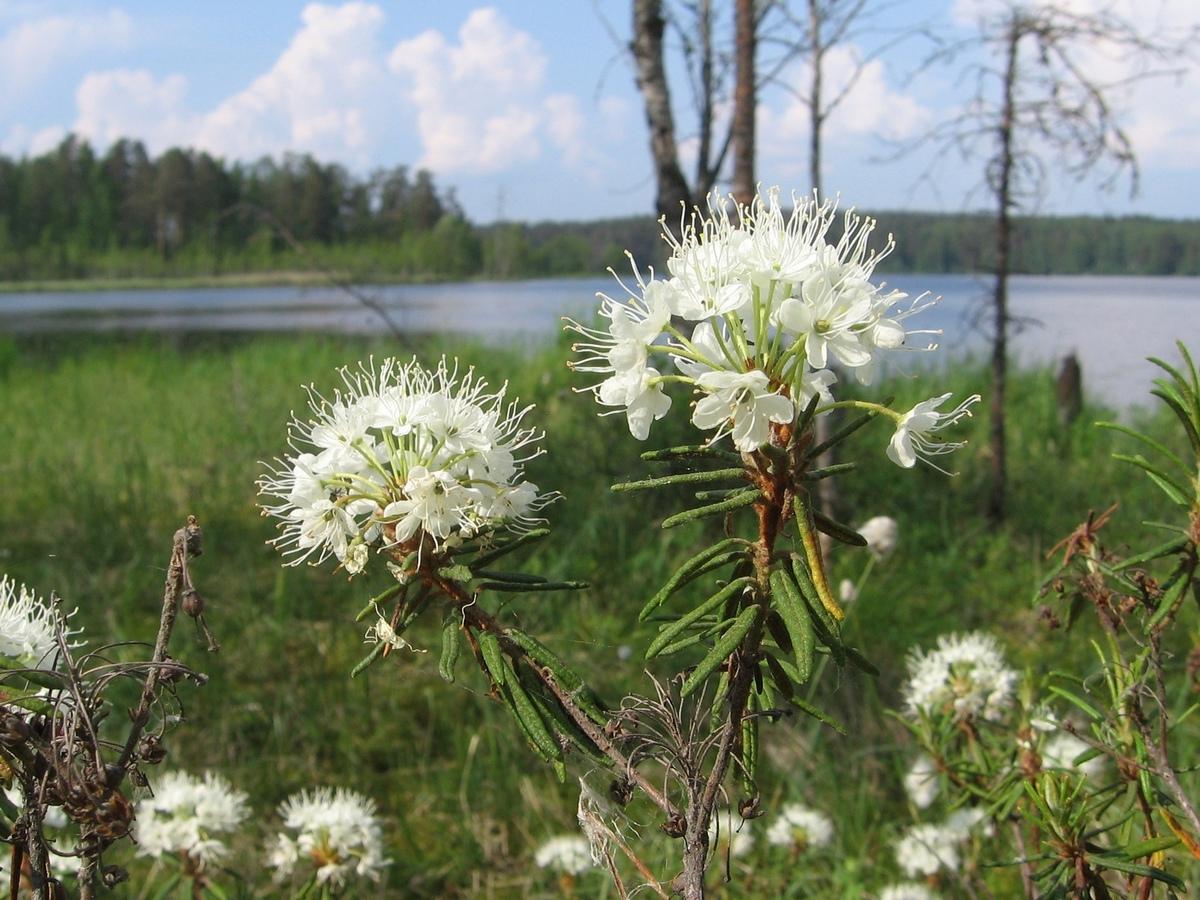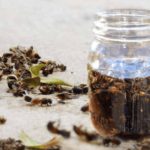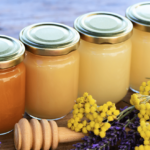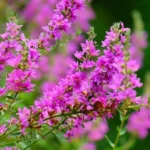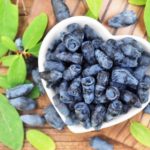Marsh wild rosemary is considered a crop from the Heather family. It is also called swamp stupor or fragrant bagoong. This plant contains many valuable components, which is why it is often used in folk medicine. The herb helps to cope with a number of problems. It is also used in cosmetology and for household purposes. It is important to consider contraindications to the use of the culture.
- Description
- Appearance
- Growth area
- Chemical composition
- Indications for use
- For men
- For women
- For children
- Recipes
- Tincture
- Infusion
- Decoction
- Drops
- Tea
- Oil
- Ointment
- People's recommendations
- For the treatment of joints
- Against hypertension
- For wound healing
- Against varicose veins
- Against cough
- Use in cosmetology
- Use in everyday life
- Contraindications
- Plant collection
Description
Marsh wild rosemary is an evergreen perennial that belongs to the Ericaceae family. A distinctive feature of the culture is a specific aroma that is similar to incense.
Appearance
The plant is an erect evergreen shrub, the height of the ground part of which is 50-60 centimeters. Sometimes it reaches 1 meter. Ledum is characterized by a recumbent stem, which is capable of rooting and has many rising branches. The shoots are covered with felt-type fluff. Old branches have bare bark of a gray-brown color. The root system can penetrate to a depth of 35-40 centimeters.
Marsh wild rosemary is distinguished by regular foliage with short petioles. It can have an elongated elliptical or linear shape and a dark green color. The flowers are located on long stalks and can have a white or reddish tint. They are characterized by an intense aroma. The flowers form umbellate or corymbose inflorescences. The corolla consists of five free petals, which have an elliptical shape.
Flowering wild rosemary bushes look very attractive. After flowering is completed, they form multi-seeded elliptical fruits in the form of boxes, filled with small flat seeds of a light yellow hue.
Growth area
Ledum is considered a cold-resistant plant that is found in forests and tundra. It grows in swampy areas of coniferous forests, peat bogs, and river valleys. Sometimes the culture is found in birch forests. Ledum is able to grow in very poor acidic soil, which is characterized by high humidity.
This crop mainly grows in the north of the European part of Russia.It is found in Siberia and the Far East. Ledum is widespread in the mountains and forests of the Sayan and Eastern Altai. The culture is also found in the north and center of Europe. It is available in Japan, China, and North America. In the center of Europe, wild rosemary forms dense thickets in raised bogs. Sometimes they occupy large areas.
Chemical composition
The unique composition of the plant gives it medicinal properties. The culture is characterized by a specific smell, which is associated with a high content of essential oils. Their maximum content is observed in the leaves. In addition, wild rosemary contains many vitamins and minerals. The plant also contains ice, which is used to produce medicines. This component effectively copes with joint pain and rheumatism.
In addition, wild rosemary contains the following components:
- flavonoids;
- coumarins;
- arbutin;
- glycosides;
- tannins;
- essential oils;
- ascorbic acid;
- phytoncides;
- neomertellin;
- andromedotoxin.
Due to the content of tanning components, wild rosemary effectively copes with inflammation and has a positive effect on digestive processes. Neomertellin acts as a natural insulin. It helps lower blood sugar.
Indications for use
Marsh wild rosemary can be used to combat many respiratory diseases.This culture successfully copes even with bronchial asthma and tuberculosis. Moreover, it is especially effective in treating various types of cough.
The plant has pronounced anti-inflammatory properties. Therefore it can be used as an antiseptic. The composition perfectly disinfects wounds and helps stop the proliferation of staphylococcus in the body. Also, wild rosemary can be used to combat the following pathologies:
- bronchitis;
- acute rhinitis;
- tracheitis;
- dysentery;
- rheumatism;
- viral infections;
- arthritis;
- pneumonia;
- tuberculosis;
- inflammatory lesions of the genitourinary organs;
- intestinal pathologies;
- dysbacteriosis;
- arterial hypertension.
One of the most valuable properties of marsh wild rosemary is the ability to cope with pathogenic microorganisms. Thanks to this, it can be used to combat almost any inflammation.
To cope with stomach diseases, you need to use the roots of the plant. Leaves and stems should be used to fight colds. However, before using the culture for medicinal purposes, it is worth doing an allergy test.
For men
Ledum marsh effectively copes with impotence and prostatitis in men. The components that make up the culture help cope with inflammation, which successfully eliminates congestion. This helps improve blood circulation in the genital area and has a beneficial effect on erection.
For women
Women can use the plant to combat genitourinary infections, which often provoke the development of infertility. To do this, you should use a decoction of medicinal herbs. It can be taken orally and douched. During treatment, it is important to take into account that wild rosemary infusion increases the tone of the uterus.
For children
Medicinal products from wild rosemary can be given to children over 7 years of age. At an earlier age, it is prohibited to use the plant, as it contains toxic substances that can harm a fragile organism. At an older age, you should definitely consult a pediatrician.
In childhood, wild rosemary decoction helps to cope with cough. It also clears mucus from the lungs. Sometimes the composition is used to combat intestinal infections.
Recipes
There are many recipes for using wild rosemary for treatment. It can be used to prepare infusions, decoctions, teas, drops and other remedies. Such formulations differ in the concentration of active components and treatment regimen. The duration of treatment is influenced by the nature of the pathology. When preparing a medicinal composition, it is important to adhere to the recipe and a certain sequence of actions.
Tincture
To prepare a tincture based on wild rosemary, the herb must be mixed with vodka in a ratio of 1:5. The finished composition must be left to infuse in a warm and dark place for 2-3 days. The resulting product is used for rubbing for various pathologies - radiculitis, rheumatism, arthritis.
Infusion
To make such a composition, you need to take 2 tablespoons of crushed raw materials, place them in an enamel container and pour 200 milliliters of boiling water. Then cover the pan with a lid and place it in a steam bath for a quarter of an hour. Then the composition must be cooled for an hour at room temperature and filtered. After this, you need to add water to get the original volume. The finished product must be kept in the refrigerator. Its shelf life should not exceed 2 days.
The composition should be drunk warm 2-3 times a day, a quarter glass after meals.The substance is used as a bactericidal and expectorant for chronic bronchitis and other respiratory diseases that are accompanied by cough.
Decoction
To prepare this remedy, you need to take 1 small spoon of crushed wild rosemary and add 250 milliliters of water. After this, the composition must be placed on the stove and kept for 1 minute after boiling. Then the broth must be removed from the stove and left to infuse for half an hour. After which it can be strained. Drinking the composition is required for colds, coughs, and bronchitis. This should be done 1 tablespoon three times a day after meals.
Drops
This remedy is used to combat rhinitis. It is recommended to instill it into each nostril 3-5 times a day. In this case, 2 drops of the composition should be used.
To make a useful remedy, it is recommended to mix 25 grams of wild rosemary shoots and 1 liter of water. First, the branches need to be chopped and filled with water, then left to infuse for 8 hours in a warm place. Before use, the product must be strained.
Tea
To make medicinal tea, it is recommended to take 5-6 whole wild rosemary leaves and 1 liter of water. To do this, you need to fill the raw material with hot water and leave for 2-3 hours. The finished product should be added to a kettle of black tea. It is recommended to use 2-3 tablespoons. It is recommended to drink this drink 1 glass 2-3 times a day.
Oil
To make a useful composition, it is recommended to take 1 tablespoon of chopped wild rosemary herb and 100 milliliters of olive oil. They need to be mixed and left for 21 days in a dark place. Then the composition needs to be filtered.
Ointment
This product is suitable for topical use. It helps cope with joint pain and rheumatism.Sometimes the substance is used to treat skin pathologies. To make a healing ointment, you need to take 2 tablespoons of dried wild rosemary and 5 tablespoons of vegetable oil.
The ingredients must be thoroughly mixed in a deep container and placed in the oven at low temperature for 12-15 hours. After this, the composition must be cooled.
People's recommendations
The medicinal properties of marsh wild rosemary allow it to be actively used in folk medicine. Most often, this herb is used to combat cough. However, there are other indications for the use of this substance.
For the treatment of joints
To cope with joint diseases, you need to use a medicinal ointment made from pork fat. To do this, you need to put wild rosemary foliage and fat in a saucepan in layers. After which the container must be placed in the oven at minimum temperature and kept there for 4 hours. Then the composition must be filtered through cheesecloth. Rub the ointment into the affected joints twice a day.
Against hypertension
Ledum also benefits the development of arterial hypertension. To do this, it is recommended to use a medicinal infusion. It should be used 1 tablespoon 3-4 times a day. This makes it possible to stabilize blood pressure parameters and improve health.
For wound healing
Marsh wild rosemary has noticeable regenerative properties. Oil with its addition helps eliminate dermatological pathologies and stimulate the healing of damaged areas. It is recommended to apply this product to problem areas before bedtime.
Against varicose veins
For varicose veins, it is worth using wild rosemary tincture with vodka. In this case, the affected areas are treated with the composition twice a day. This must be done within 10 days.Thanks to this, it is possible to reduce the severity of knots and eliminate the feeling of heaviness in the legs.
Against cough
To cope with a cough and eliminate inflammatory processes on the mucous membranes of the respiratory tract, it is worth making a decoction based on wild rosemary and coltsfoot. To do this you need to do the following:
- Mix herbs in equal proportions.
- Take 2 tablespoons of the mixture and mix with 250 milliliters of boiling water. Boil over low heat for 15 minutes and leave to infuse.
- After a quarter of an hour, strain and put in a cool place.
- Drink 1 tablespoon 6-8 times a day. This is done at the same time interval.
The decoction needs to be prepared every 2 days. The mixture cannot be stored longer, as it will lose its medicinal properties.
To cope with cough in children, it is permissible to use herbal teas or wild rosemary decoctions. They help relieve expectoration. To prepare such products you need to do the following:
- Take 1 small spoon of plant stems and pour 1 glass of boiling water.
- Cook for 15 minutes.
- Strain.
- Place the broth in the refrigerator.
Use in cosmetology
Ledum contains many bioflavonoids. It also contains vitamins E and C, as well as selenium. All these components have a rejuvenating effect on the skin and help prevent it from fading. Products based on wild rosemary tone the dermis and strengthen the walls of capillaries. They also improve the process of lymph circulation and nutrition at the cellular level.
To treat the skin, you need to brew a decoction and use it to wipe your face after washing. To make a medicinal composition, you need to take 1 small spoon of dry herb per glass of boiling water. You need to cook the mixture for 10 minutes. After cooling, it must be cooled.
Use in everyday life
In the regions where this herb grows, it is used to make bath brooms. To enhance the effect, the product is made from branches of different trees - birch, maple, oak. To give the room a pleasant smell and achieve a disinfecting effect, several branches of wild rosemary are hung in the bathhouse.
The culture also helps repel insects. To do this, it is recommended to lay out the branches of the plant in the house and on cabinet shelves. Their pungent odor helps repel moths and mosquitoes.
Contraindications
It is important to consider that wild rosemary has a number of important contraindications. These include the following conditions:
- hepatitis;
- pancreatitis;
- glomerulonephritis;
- lactation;
- pregnancy;
- childhood;
- individual intolerance.
Excessive consumption of wild rosemary leaves often provokes poisoning, dizziness, and increased irritability. It is important to consider that the culture has toxic properties. Therefore, it must be taken under the supervision of a doctor.
It is worth noting that the use of wild rosemary together with strong alcoholic drinks is strictly prohibited. The plant significantly enhances the effect of alcohol on the body, increasing the degree of intoxication.
Plant collection
Shoots of wild rosemary can be used as medicinal raw materials. It is recommended to harvest leafy branches of the current year. You should not give preference to lignified fragments.The collection of raw materials should be done in August-September - during the ripening of the fruits. In this case, the shoots should be cut off manually or trimmed with a knife or pruning shears. Their length should be 10 centimeters.
It is recommended to dry the shoots in the attic or in the shade under a canopy. It is important to ensure good ventilation. The raw materials should be spread in a thin layer on cloth or paper and turned over regularly. You can also dry raw materials in dryers. In this case, the temperature should not be more than +30-40 degrees.
It is important to be careful when working with the culture, as it has poisonous properties and a pungent aroma that can cause nausea, headaches and dizziness. You can work with wild rosemary for a maximum of 2-3 hours a day. This should be done wearing a respirator or gauze bandage. Finished raw materials should be stored in cool, dry rooms on racks.
Marsh wild rosemary is a useful crop that contains many valuable components. Due to this, the plant is often used in folk medicine to treat a variety of pathologies. It is important to take into account recommendations for the use of drugs and contraindications to them.

